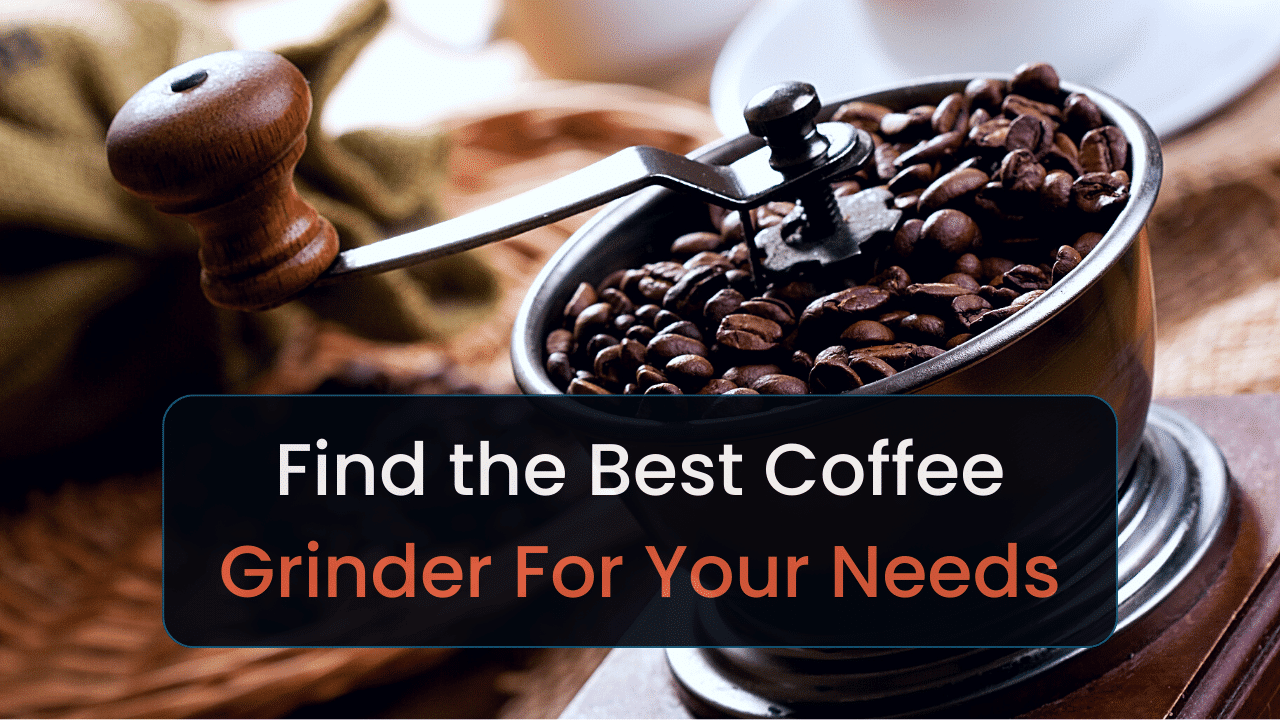1. Commercial Grinders
- Best Commercial Coffee Grinder: Built for high volume and consistency.
- Best Industrial Coffee Grinders: Build for extremely high volume environments.
- Best Commercial Espresso Grinders: Commercial-grade espresso grinder.
- Brands
2. Mechanism & Build
- Best Burr Coffee Grinder: Explore precision and consistency.
- Best Blade Coffee Grinder: Quick operation for those in a hurry.
- Best Hand Coffee Grinder: Manual control over grind size.
- Best Electric Coffee Grinder: Combining convenience and quality.
- Best Grind-By-Weight (GBW) Grinders: Easy for a fast and consistent workflow.
- Best Coffee Grinders With A Timer: For you who want a easy and fast workflow.
3. Size & Portability
- Best Small Coffee Grinder: Space-saving designs for compact spaces.
- Best Portable Coffee Grinder: Compact designs ideal for traveling.
4. Budget
- Best Budget Coffee Grinder: Quality meets affordability.
- Best Coffee Grinder Under $100: Quality grinders at a pocket-friendly price.
5. Brewing Method
- Best Coffee Grinder For Espresso: Fine grind for the perfect espresso.
- Best Coffee Grinder For French Press: Coarser grinds ideal for French Press brewing.
- Best Coffee Grinder For Pour Over: Medium-coarse grind perfect for pour-over.
- Best Drip Coffee Grinder: Consistent medium grind for drip coffee makers.
- Best Coffee Grinder For Cold Brew: Coarser grind for cold brew perfection.
6. Specialized Grinders:
- Best Quiet Coffee Grinder: For minimal disturbance.
7. Coffee Machines with Grinders
- Best Espresso Machine With Grinder: Two-in-one espresso solutions.
- Best Coffee Maker With Grinder: Integrated grinders for fresh brews.
8. Coffee Grinder by Brands
Coffee Grinder Buying Guide
Here are things we have to consider when writing the rankings above. You can learn everything yourself below.
- The Ultimate Guide to Buying a Coffee Grinder: Tailored advice to guide you to the ideal grinder for your needs and budget.
Understanding Coffee Grinders
Equip yourself with foundational knowledge before making a purchase.
- What is a Coffee Grinder?: An introduction to the tool that transforms beans into brew-ready grounds.
- Blade vs Burr Coffee Grinders: Discover the differences in mechanisms to determine which suits your brewing needs.
- Flat Burrs vs Conical Burrs: Delve into the designs to identify which offers better consistency and flavor extraction.
- Steel Burr vs Ceramic Burr: Weigh the benefits of durability against flavor nuances to make an informed choice.
Factors to Consider
Key considerations to ensure your grinder meets your specific requirements.
- Coffee Grinder Noise Levels: If you value quiet mornings, learn which grinders won’t disrupt your peace.
- Coffee Grinder RPM: Understanding the importance of grind speed and its impact on heat and consistency.
- Manual or Electric Grinder: Determine whether a hands-on approach or push-button convenience aligns with your lifestyle.
Coffee and Grinder Maintenance
Keep your beans and grinder in peak condition to maximize their lifespan and your brew’s quality.
- How to Clean a Coffee Grinder: Regular maintenance ensures consistent grinds and a long-lasting machine.
- Whole Bean vs Ground Coffee: Do you even need a coffee grinder? Explore the pros and cons of grinding fresh for each brew.
- Do Coffee Beans Go Bad?: Learn the signs of stale beans and storage tips to maximize freshness.
Perfecting the Grind
Achieve the ideal grind for every brew and use tools to enhance precision.
- Coffee Grind Size Chart: Visualize the ideal grind size for various brewing methods.
- How to Grind Coffee Beans: Techniques to ensure uniformity and optimal flavor extraction.
- Best Grind for Pour Over Coffee: Tailoring your grind to match specific brewing methods for the best results.
Hope you find what you are looking for!

